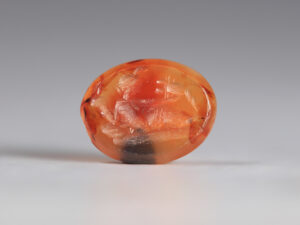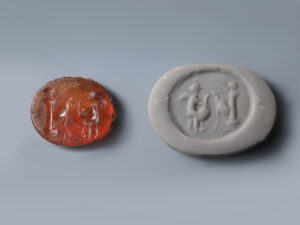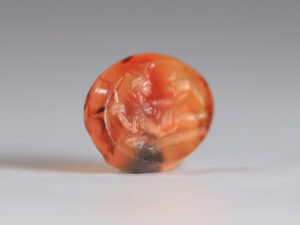The term intaglio refers to a small image that has been engraved into a gemstone and usually set in a piece of jewellery, most commonly a ring. Such artistic form has its origin in Sumer in the 4th millennium BC, with the appearance of cylinder and stamp seals, whereby decorations and patterns were engraved into soft stones. Intaglios with fine detailing were highly desired with one reason being that the intricacy making wax seals difficult to forge. The earliest intaglios were produced by hand using simple iron tools along with abrasive emery powders. Common scenes used during the Roman period were animals, mythological creatures and portraits. During the Hellenistic period and the early Roman Empire, the art of intaglio reached its apogee, with there being a steady decline in craftsmanship in the late Imperial Rome, until a revival of interest with the Byzantine and during the Renaissance.
Sacrifices were a key part of the Ancient Roman religion and every-day life. Their sacrificial practices, though distinguishable from the Greek and Etruscan traditions, were not functionally different, and took place both as an act of its own and as part of larger celebrations. The Roman sacrifice had six main stages: the pompa (procession) of the victim to the altar; the praefatio, the prayer and the libation of wine, incense, and other such offerings at the altar; the immolatio, the pouring of the wine and meal over the animal’s head; the killing of the animal; the examination of the animal sacrifice’s entrails for omens, and finally the burning of the animal, which was typically followed by a banquet from the meat of the animal. Sacrifices were performed both publicly and privately for good omens from the gods.

























